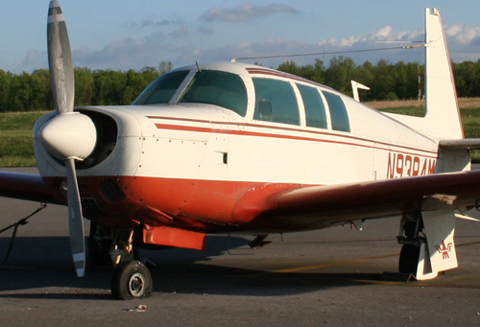I became a private, non-commercial, non-instrument rated pilot when I was 42 years old. I had always loved going to the airport to watch small, single engine planes take off and land, but for some reason I never crossed over and tried to find out how to become a pilot.
As I dig deep to find out why I didn’t, the only thing that I can think of was that there was no visible means (at the time) of entry. Meaning there wasn’t a visible path or a sign that said “Learn to Fly” or “Become a Pilot”. Thankfully times have changed thanks to improved signage, web sites, and pancake breakfasts. Another reason could have been that I was just not sure of myself. I never had much self-confidence as a child, so perhaps I thought it was a far too difficult thing for me to do.
As the years passed, life got in the way, as did college, my jobs, my relationships and family – these were the priority, not flying. I was deep in debt and in the end all of my time was spent trying to get out from under it all…to somehow live again…to be that child at the airport again. A Discovery Flight in 2003 finally brought me around!
Today is not 1975 – back then the US General Aviation Shipments of GA Single Engine piston aircraft stood at 11,400 units. (Source GAMA) By 1995 the Worldwide General Aviation Shipments of GA Single Engine piston aircraft number was at 605. Thankfully by 2006 that number grew to 2,513 before heading down to 895 in 2009.
If I was a 42 year old pilot from 1975 I would now be 78 years old…that alone is pretty depressing, but the good news is that my 1975 Cessna model 172M that I bought brand new for $16,055 would now be worth between $25,000 (and needing a paint job) and $67,500. How is this possible?
My point is that although we are much better at marketing the industry, we have still done a bad job of making it affordable. The industry only believes in selling planes in the 6-figure range, and a new Skyhawk at $274,900 (with the G1000 panel) is the perfect example.
To complicate matters even more the industry is going through a huge technology curve, which means they NEED to have the G1000 as standard equipment. Cessna, Piper and everyone else need to produce planes that are ready for the airspace and safety demands todays pilots expect. What a catch 22 this is!
As I walk along the ramp (without a plane of my own) I look with sadness on the Cessna with bees nests in its air vents, or the Mooney sitting on its rims with critters running in and out of it, and the Cessna 150, faded and gutted like a fish. I ask myself, how did it get to this? How could someone let their plane “die” this way?
It’s painfully obvious (and probably in a good way) that an under financed individual should pass on ownership. There really is nothing in their favor cost wise…the technology is moving too swiftly and they (or at least their plane) will be stuck frozen in a moment in “technology” time.
Communal plane ownership in the form of a flying club, a pilots association, or fractional ownership would be better options. This is especially true if a new or almost new plane is purchased. I have been blessed since I belong to the Penn Yan Flying Club that has both old and new aircraft…which live in hangers and are taken care of. We need to bring this concept to every airport, wherever practical!
General Aviation might not be dead…but it can sure look that way at times.



No responses yet